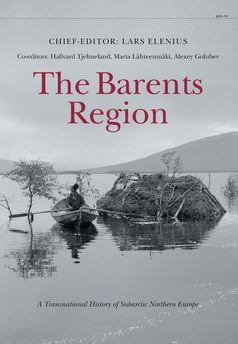The Barents Region
A Transnational History of Subarctic Northern Europe
The Barents region comprises the northernmost parts of Norway, Sweden, Finland and Russia. It was established in 1993 as a result of the disintegration of the Soviet Union, and it is also the first macroregion to move beyond the Cold War’s Iron Curtain. This book provides a research-based history of the Barents Region from 800–2010 written by 27history researcher within the thirteenth sub-regions of the Barents Region. It is suitable as a course book in history for students at university level, but also for social sciences and for others interested in the comparative transnational history of northern Russia and northern Scandinavia.
Six million people live in the Barents Region. The authors tell the history of the regional development in four nation states, bridging the gap between Russia and the Nordic countries in terms of ethnicity, religion, cultural content, political systems, economies and different stages of modernisation. The account starts with the history of independent ethnic groups in a common area. From the ninth century we can see tendencies towards an integration of the northernmost areas of Europe into larger political structures, culminating in early state formations such as the merchant republic of Novgorod and the kingdoms of Norway and Sweden. The focus is on comparative transnational aspects of history through stages of rivalry and co-operation. It is also the history of the many minorities and nationalities moving cross borders of different kinds.
As is the case with nations, there are different understandings of what constitutes a region. Are regions deeply grounded in history and culture or are they created by actors for instrumental reasons? The Barents Region is the prototype of a region made by concrete actors for political purposes, but the historical account shows that there were transnational contacts even before this novel political construction came into being. In the concluding chapter the reader will find reflections on what kind of region the Barents Region invented in 1993 really is.



